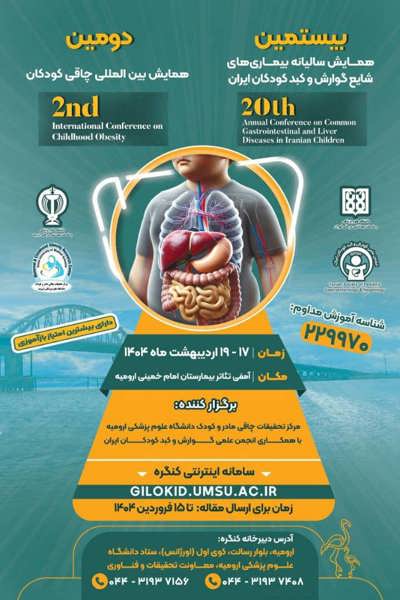0% Complete

صفحه اصلی
/
بیستمین همایش سالیانه بیماری های شایع گوارش و کبد کودکان ایران و دومین همایش بین المللی چاقی کودکان
نویسندگان :
کلمات کلیدی :
چکیده :
لیست مقالات بایگانی شده
Fatemeh Dehghani - Mohammad Reza Rahi - Parvin Babaei
Mahta Jalilzadeh - Aylin Sabri
Mortaza Taheri-Anganeh - Hadi Maleki-Kakelar - Mohammad Reza Pashaei
Mohammad Yousefi - Samaneh Sepahi - Sakineh Nouri Saeidlou
Sanaz Bohlouli Sardroudi - Zahra Firoozi - Sara Arefhosseini - Mehrangiz Ebrahimi-Mameghani
Mahdie Feizi Eliyas Abad - Mortaza Taheri-Anganeh - Mohammad Reza Asgharzadeh - Ebrahim Mazloomi - Hadi Maleki-Kakelar
Faezeh Tejareh - Laleh Payahoo
Sadra Khodaei Alamdari - Sajjad Moradi - Kosar Rajabi
Mona Nikpo - Hamidreza Houshmand - Mir Reza Ghaemi - Javad Rasouli

